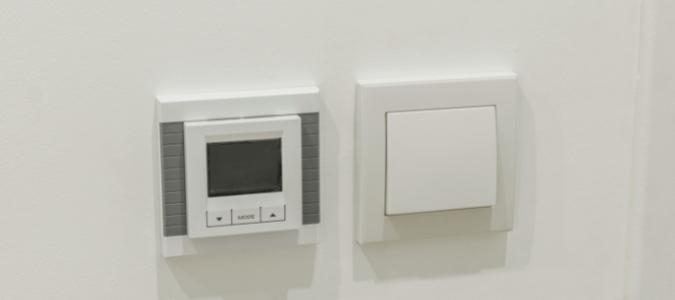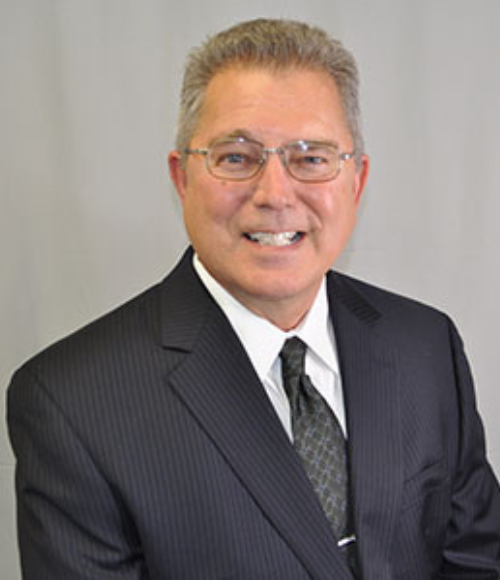When the temperatures outside start to drop, nothing is better than enjoying a cozy night in your warm home. However, many homeowners are well aware of a different experience: you turn your thermostat to heat for the first time, and it does not work.
There could be a number of reasons why your thermostat is not turning on the heat. Luckily, many of them are easily fixable.
My Thermostat Is Not Turning on the Heat
As the temperatures start to turn cooler, it’s important to make sure your heating system is working properly. It’s a good idea for homeowners to test the system well before cold weather sets in so that there’s plenty of time to troubleshoot any issues.
If your thermostat is not turning on the heat at all, there could be a few reasons why your thermostat is not working. First, check your thermostat to make sure it’s set to either the “heat” or “auto” setting. If it is, you may need to adjust the temperatures to get the heating to kick on.
When the thermostat is set to a temperature that is too low, the heating will not turn on. Try raising the temperature a few degrees and then wait a few minutes to see if the heat starts on its own.
If the thermostat is still not turning on the heat, check the battery. If the thermostat’s display is blank or not responding, it’s highly probable that the battery has run down. Remove the thermostat’s cover to replace the batteries and try turning on the heat again.
How to Dust a Thermostat
Next, if the above solutions don’t work, it may be time to clean and dust your thermostat. When dust accumulates on the internal components of a thermostat, it can impact how well it operates and performs.
Before you dust it, make sure you turn off the power to the thermostat. Then, carefully remove the thermostat cover and gently dust the inside with a soft brush.
Loose or disconnected wires can also cause a thermostat to malfunction. If any wires are loose, they will need to be tightened by an HVAC professional. Do not attempt to do this on your own.
Finally, the last component of the heating system to test is the high limit switch.
The job of the high limit switch is to tell the thermostat when to turn off the heating system to prevent overheating. If it is not working properly or if it’s on the wrong settings, it may prevent your heating system from turning on altogether.
If you try all of these tips and your thermostat is still not turning on the heat, contact a professional HVAC service. A professional can identify the problem and fix the system for you, saving you time and headaches.
Why Does My Thermostat Say Aux Heat?
Sometimes your thermostat will say “aux heat” on the display screen, and most homeowners do not know what that means. If you’re confused, you aren’t alone. Aux heat simply means that your heat pump needs some assistance to reach its intended temperature setting.
Aux heat is short for auxiliary heat. To understand what it means, it’s helpful to understand how a heat pump works in the first place.
Heat pumps use refrigerant to transfer energy between your indoor and outdoor heating and cooling units. When the heat is turned on, the outdoor unit extracts heat from the air and transfers it to the indoor unit.
As the outdoor temperatures go down, it becomes harder for the heat pump to efficiently draw heat from the outside. When this occurs, the heat pump relies on an auxiliary heating source to warm your home. The auxiliary source is usually an electric heater or gas furnace.
This is what occurs when your thermostat display reads “aux heat.” While it is not a huge cause for concern, your heating system is much less efficient when it relies on an auxiliary heating source.
When Aux Heat Becomes a Bigger Problem
It’s normal for your heating system to rely on auxiliary heat when the outdoor temperatures are low. However, in certain instances, it can become a bigger problem and indicate that your HVAC system is not functioning properly.
For example, if you see the aux heat indicator on your thermostat when the weather is warm or mild outside, your heat pump is having trouble performing or fully defrosting. It should only rely on aux heat in extremely cold conditions.
Next, if your thermostat switches to aux heat on a frequent basis, it could indicate that your system can’t keep up with the heating demand. Throughout the winter, keep an eye on your thermostat to make sure the aux heat indicator only occurs occasionally, not all the time.
If your home isn’t getting warm enough even when your heating system is using aux heat, that could be a sign of a bigger problem. It indicates that your heating unit is not running efficiently, which means it will take longer to fully heat your home. Additionally, you may notice your heating bill go up despite not changing your heating habits.
All of these instances are examples of a malfunctioning heating system. If you experience any of them, contact an HVAC professional. Heating systems are complicated, so enlisting professional help will take care of the issue much faster so that you can enjoy a warm house again.
How To Change the Battery in a Thermostat
It’s important for all homeowners to pay attention to their thermostat batteries in order to maintain a comfortable temperature in their homes. Thermostat batteries must be changed on a regular basis, and ideally, before they are completely drained, to avoid interruptions.
How often you will need to change your thermostat battery will depend on the type of thermostat you have and the batteries you use. However, it’s common for thermostat batteries to last for one year. Some newer smart home thermostat batteries may last longer thanks to advancements in energy efficiency.
When To Change a Thermostat’s Battery
There are several ways to tell when it’s time to change your thermostat battery. First, the light on the display screen will dim, making it harder to read the temperature. This is a strong indication that the battery is almost drained.
Next, the buttons on the thermostat may become unresponsive if the battery is low. If you’re finding it harder to move the temperature up and down using the buttons, try changing the battery and see if that solves the problem.
Lastly, your thermostat or HVAC system may start malfunctioning if the batteries are low. Changing the battery is always a great starting place to troubleshoot issues that your HVAC system is having. If your system continues to malfunction after you change the batteries, contact a professional to inspect it.
It’s important to change your thermostat batteries before they are completely drained. Not only will you lose power to your thermostat, which will turn off your heating and cooling systems, but you will also lose your saved thermostat settings.
Before you change the battery, make sure you turn the power to your heating and cooling system off. You’ll find the power button on your circuit breaker, or you can switch off the power to the furnace.
Once the power is off, carefully remove the thermostat cover. You’ll likely need to use a flathead screwdriver to do so. Next, remove the old batteries and replace them with new ones. Put the thermostat cover back on and turn the power back on.
Turn the thermostat on and make sure the batteries are working properly. If you have any issues with your heating and cooling system, contact a professional HVAC repair service.
Keep Your Home Warm All Winter
It’s important for homeowners to remember that there are several reasons why your thermostat is not turning on the heat. An HVAC expert can help you get to the bottom of it and save you time and headaches.
ABC Can Resolve Your Thermostat Problems
Thermostats are complicated and issues can arise for a number of reasons. Instead of trying to diagnose these issues yourself, contact ABC Home & Commercial Services. Our pros will efficiently diagnose and repair the HVAC problem and get to work on fixing it. We even provide preventative AC maintenance so we can catch potential problems early.



